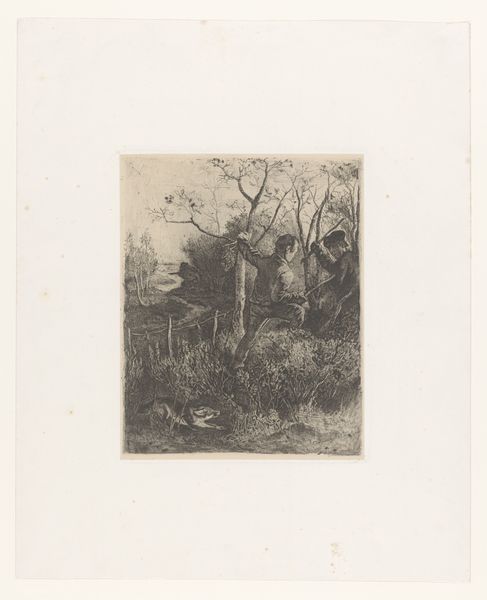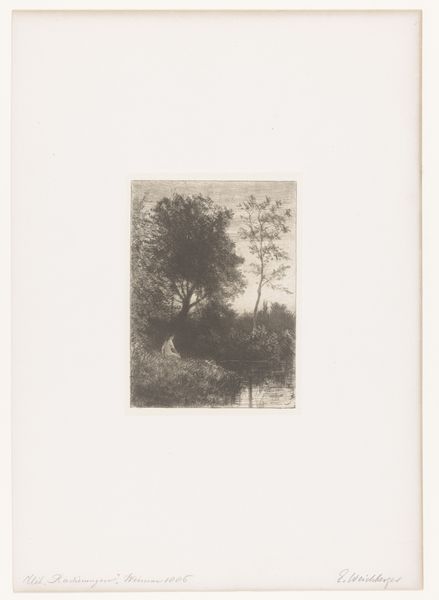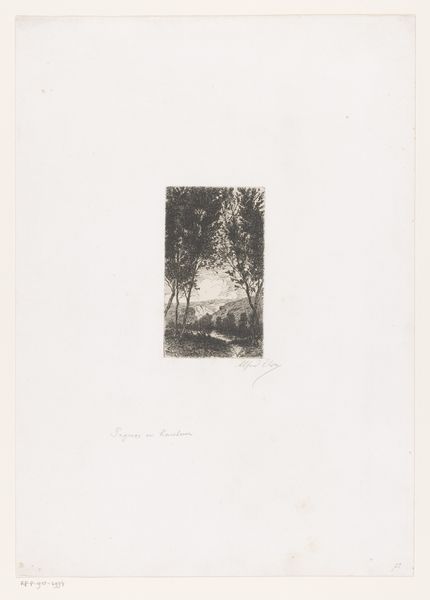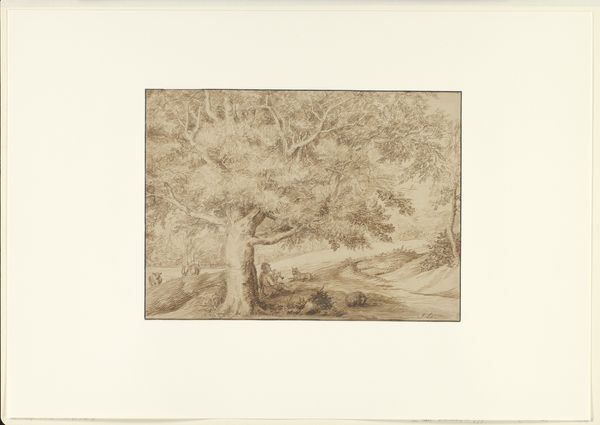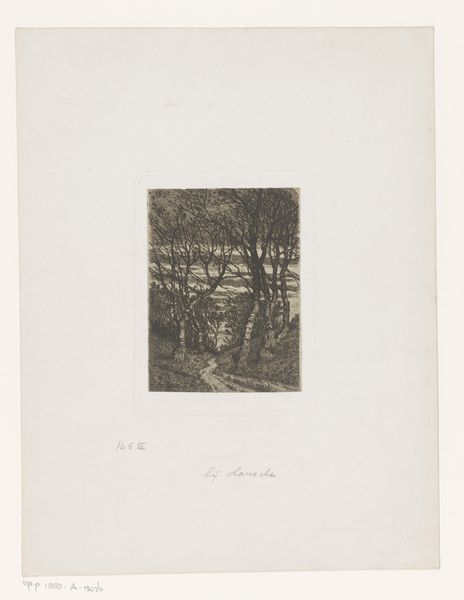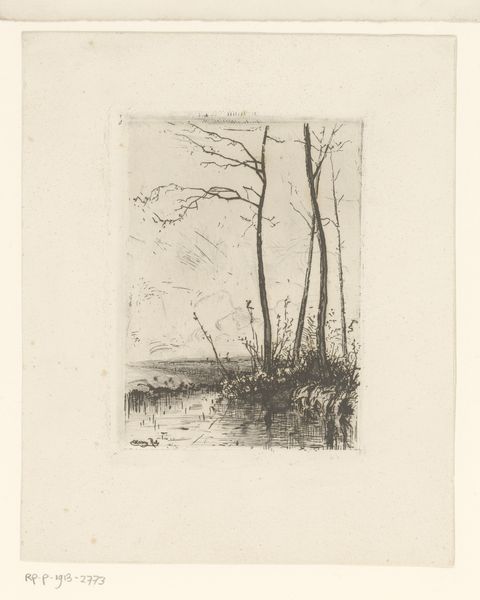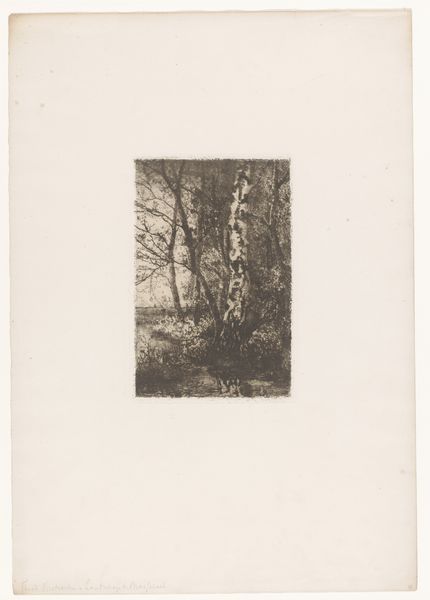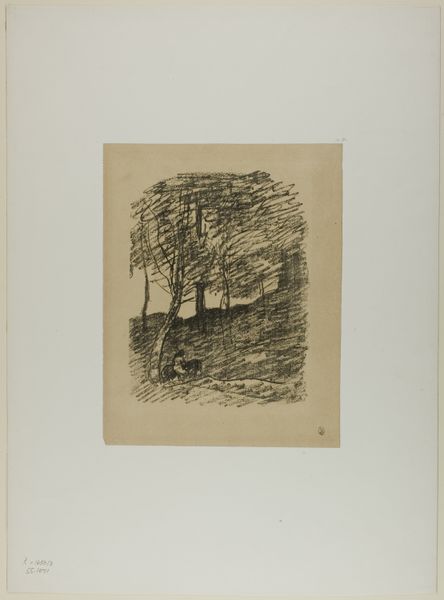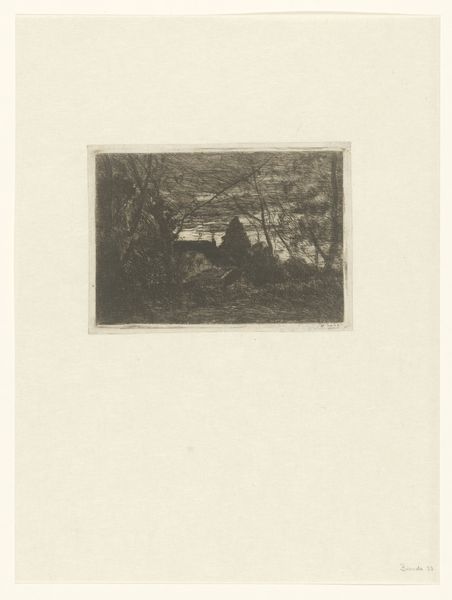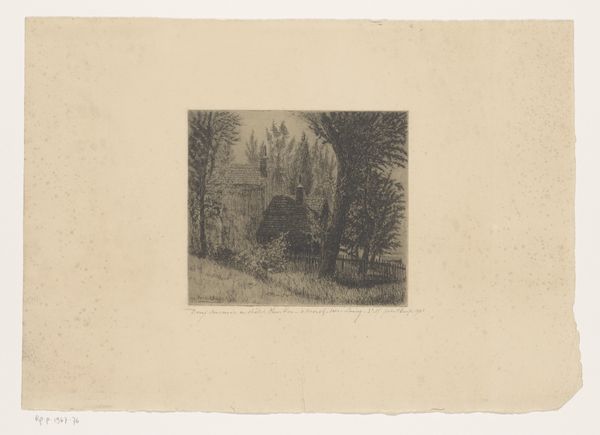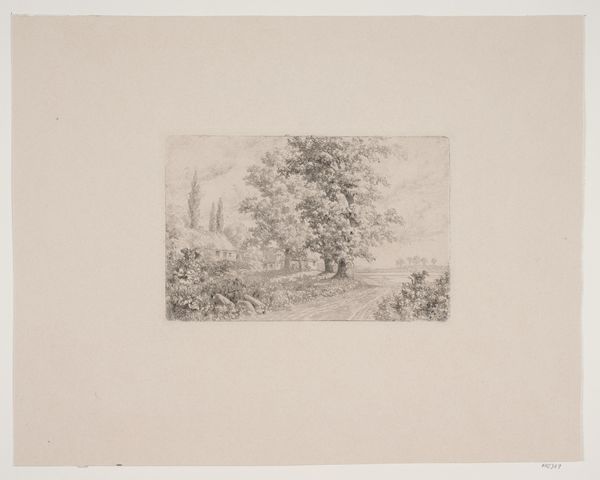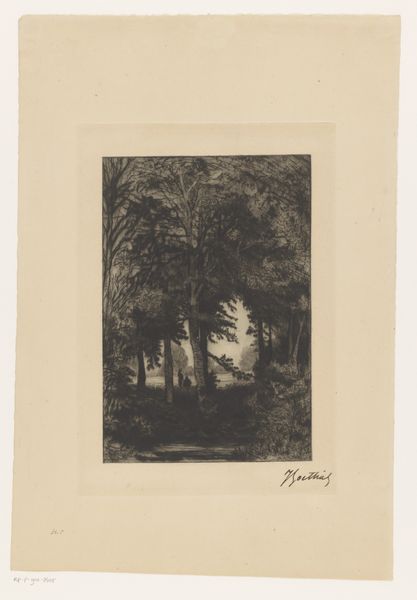
Dimensions: 231 × 229 mm (image); 231 × 229 mm (plate); 539 × 402 mm (sheet, with folds)
Copyright: Public Domain
Editor: So, this is Armand Séguin's "Evening," created in 1894. It's an etching printed on paper. It gives me a very quiet, almost melancholy feeling. What stands out to you in this piece? Curator: The recurring motif of the tree, rendered through those delicate lines, serves as a potent symbol. Tell me, what do trees often represent across cultures and throughout art history? Editor: Hmm, I guess trees could symbolize life, growth, and connection to nature? Curator: Precisely. And here, they're silhouetted against the evening sky, a transitional space that evokes both closure and potential. Notice the lone figure in the foreground. How do they contribute to the overall symbolic narrative? Editor: The figure almost seems to be blending into the landscape, so maybe that indicates humanity’s interconnectedness with the environment? Or possibly feelings of loneliness. Curator: Exactly. Séguin, through his careful orchestration of light and shadow, asks us to contemplate our place within the grand, cyclical order of things. He reminds us that endings, like the close of day, invariably lead to new beginnings. Doesn’t the delicate medium itself contribute to that quiet sense of fleeting beauty? Editor: Definitely. It’s almost as if the moment could vanish at any second. Curator: These landscapes captured the spirit of the fleeting moments of life and its intrinsic connection to nature and cultural memory, a poignant reminder to look more deeply. Editor: That's a perspective I hadn't fully considered before. I will be more mindful of symbols of nature from now on.
Comments
No comments
Be the first to comment and join the conversation on the ultimate creative platform.
